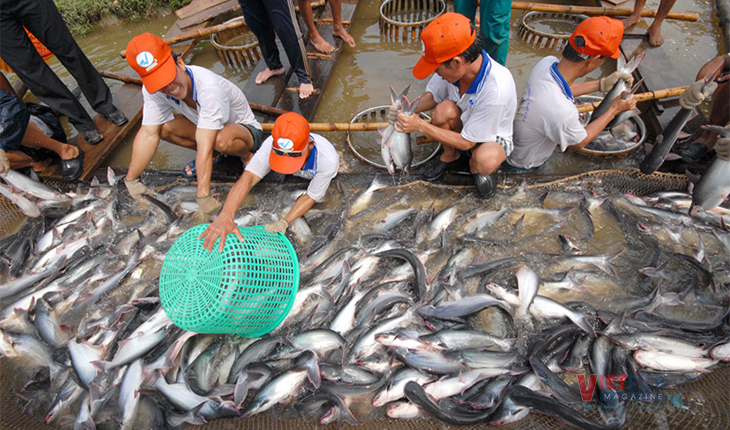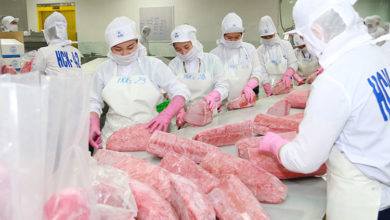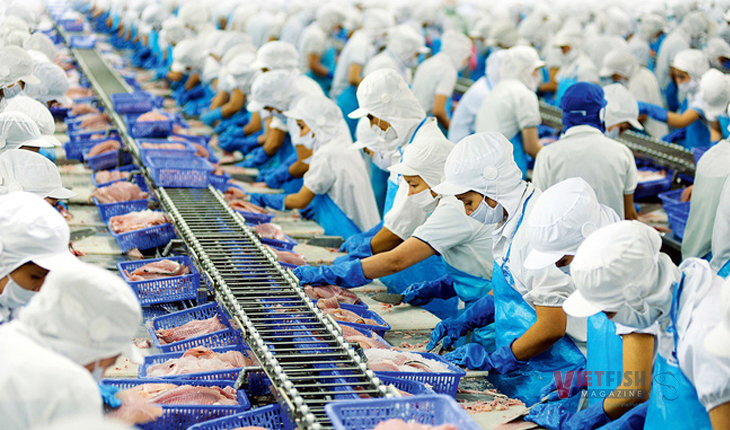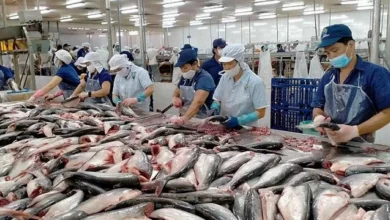Seafood exports to China surge, overtaking the U.S. as top destination
In a major shift in trade dynamics, China has become the largest importer of Vietnamese seafood, overtaking the United States, once the leading market, amid mounting tariff pressures.
According to the Vietnam Association of Seafood Exporters and Producers (VASEP), Vietnam’s seafood exports reached USD 3.3 billion in the first four months of 2025, up 21% year-on-year. In April alone, export earnings totaled USD 850.5 million, a 10% increase. However, the most notable change came from the reshuffling of top export destinations.
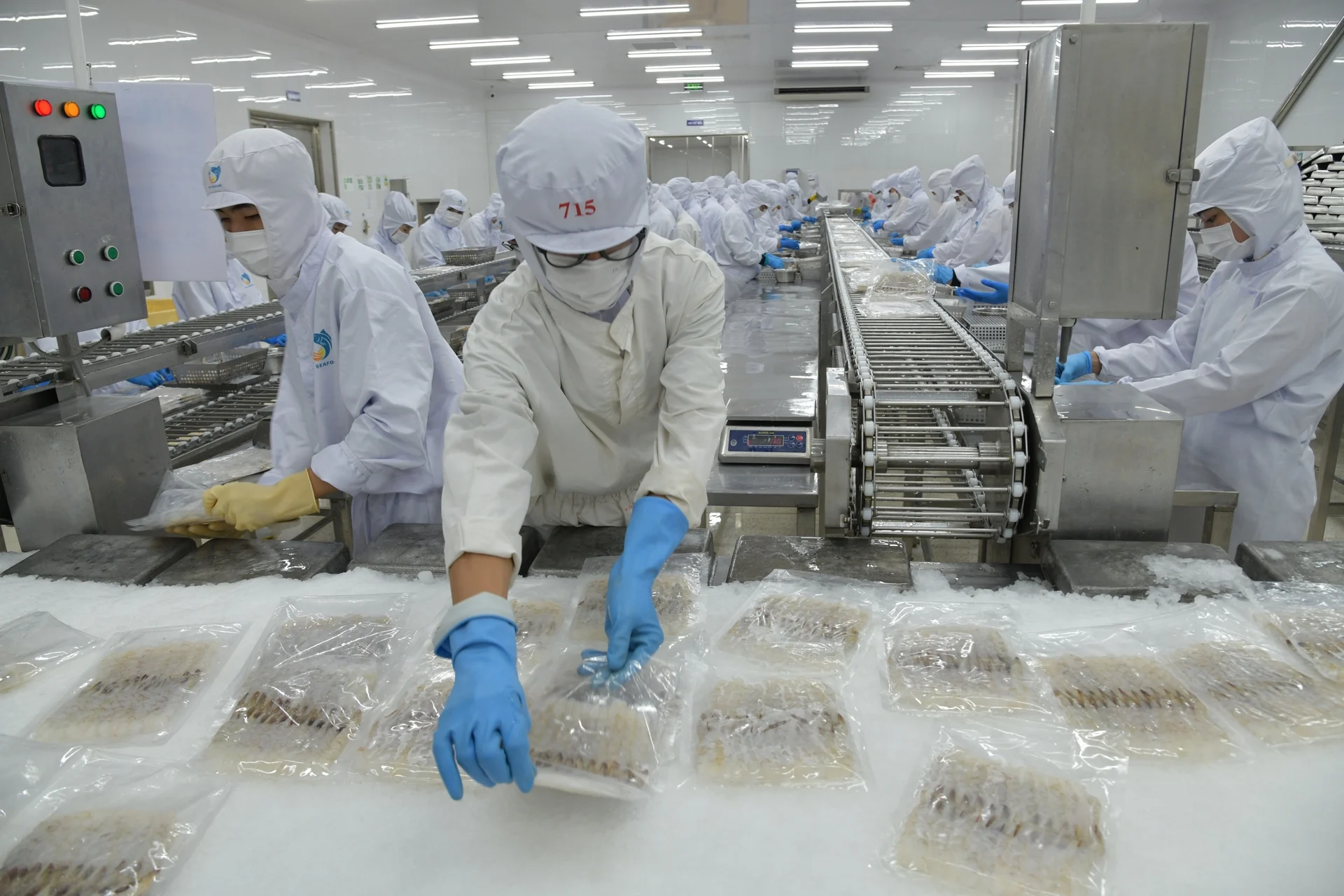
China, including Hong Kong, now tops the list with imports reaching USD 709.8 million during the four-month period, marking a sharp 56% increase. In April alone, exports to China totaled USD 182.3 million, up 29%, driven largely by growing demand for premium shrimp, crab, and mollusks.
Japan followed with imports of USD 536.6 million, up 22%, while the EU and South Korea also showed strong growth, importing USD 351.5 million (+17%) and USD 264.1 million (+15%) respectively.
By contrast, exports to the U.S. saw modest growth of just 7%, totaling USD 498.4 million. Alarmingly, exports in April fell 15% month-on-month, generating only USD 120.5 million, a clear sign of the chilling effect caused by Washington’s countervailing tariff measures.
VASEP attributed this decline to mounting trade barriers, particularly proposed U.S. tariffs on key items such as pangasius and shrimp, which have long relied on the American market. The higher cost of goods is prompting U.S. importers to turn to alternative suppliers like India and Ecuador. Additionally, stricter technical barriers, such as food safety checks and traceability requirements—are eroding Vietnam’s competitive edge.
While free trade agreements (FTAs) such as the CPTPP and EVFTA are helping Vietnam diversify its export markets, industry players acknowledge the challenges ahead. Many exporters are now reorienting their strategies toward value-added products and broader market coverage to reduce dependence on the U.S.
Profit targets cut, possible U.S. withdrawal considered
During its 2025 Annual General Meeting, Ho Quoc Luc, Chairman of Sao Ta Foods, revealed that a worst-case scenario involving a 46% U.S. tariff on Vietnamese products could force the company to withdraw from the American market. In Q1/2025 alone, Sao Ta’s exports to the U.S. exceeded USD 46 million, with total volume, including in-transit shipments, expected to surpass USD 60 million. The company is accelerating shipments ahead of the anticipated tariff implementation to minimize risks.
If necessary, Sao Ta plans to shift its focus to alternative markets, including Canada, Australia, South Korea, and especially Japan. China is also under close watch as a potential high-growth market.
Meanwhile, Vinh Hoan Corp, Vietnam’s leading pangasius exporter, is adopting a more cautious approach. CEO Nguyen Ngo Vi Tam confirmed that U.S. clients remain committed and are requesting faster farming cycles to ensure supply continuity. Although no withdrawal is planned, the company has trimmed its 2025 profit target to VND 1 trillion, down from VND 1.226 trillion in 2024.
U.S. market remains key ahead of tariff deadline
Looking ahead, VASEP expects a surge in seafood exports to the U.S. in May and June as Vietnamese companies race to fulfill contracts before the new tariffs take effect on July 9. Export revenue is forecast to rise 10 – 15% compared to April, driven by last-minute orders and competitive pricing strategies.
Conversely, shipments to other regions, including China and ASEAN, may decelerate, with projected growth of only 3 – 5%. The cause: Chinese seafood, under pressure from U.S. tariffs, is flooding neighboring markets at competitive prices, reducing the appeal of Vietnamese products, especially in the low-cost segment.
EU and Japanese markets are expected to remain stable, posting growth rates of 8 – 10%, though insufficient to offset the slowdown in China and ASEAN.
VFM


